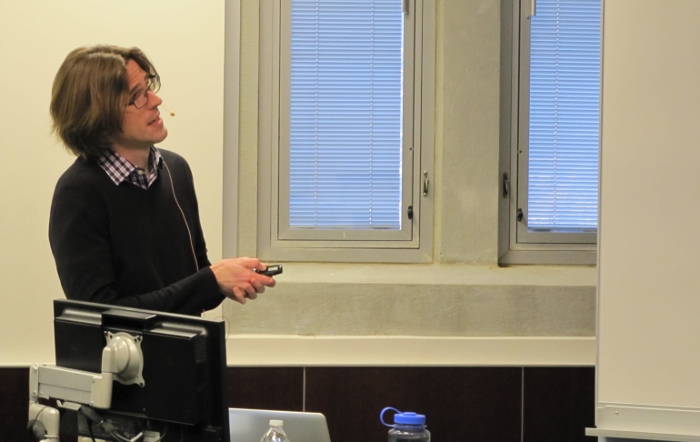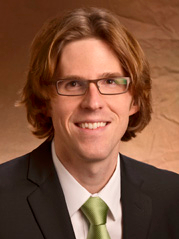NIMBioS Seminar Series
In conjunction with the interdisciplinary activities of the National Institute for Mathematical and Biological Synthesis (NIMBioS), a seminar series on topics in mathematical biology will be hosted at NIMBioS every other Tuesday at 3:30 p.m. (unless otherwise noted) in the Hallam Auditorium, Room 206, Claxton Building, 1122 Volunteer Blvd. Seminar speakers will focus on their research initiatives at the interface of mathematics and many areas of the life sciences. Light refreshments will be served in Room 206 beginning 30 minutes before each talk. Faculty and students from across the UT community are welcome to join us.
Time/Date: Tuesday, November 25, 2014, 3:30 p.m.*
Location:
Room 206, Claxton Building, 1122 Volunteer Blvd.
Speaker:
Dr. Steven Abel, Chemical and Biomolecular Engineering, Univ. of Tennessee, Knoxville
Topic:
Deconstructing Signal Transduction at the Cell Membrane
Abstract:
Cells orchestrate responses to their environment by means of biochemical reaction networks that propagate molecular signals from the cell membrane to the interior of the cell. These signal transduction networks involve many components interacting in a noisy environment, and mathematical modeling is an essential tool for understanding how they collectively interact in space and time to generate reliable responses. Many key signaling reactions occur at the cell membrane, yet how the membrane environment influences the collective behavior of signaling networks remains poorly understood. In this talk, we use theoretical and computational methods rooted in statistical mechanics to investigate (i) how the membrane environment influences emergent properties of signaling networks, and (ii) what mechanisms control the spatial organization of membrane-associated molecules when cells are in contact. In the first part, we use stochastic methods to study signaling networks that exhibit bi-stability. We find that confining proteins to a membrane-like environment can markedly alter the emergent behavior by altering protein mobility, protein concentration, and spatiotemporal correlations between pairs of molecules. In the second part, we use field-theoretic methods to study the binding and subsequent spatial reorganization of complementary molecules on apposed cell membranes. When two or more molecular complexes with different natural lengths are present, the species segregate into distinct spatial regions, even in the limit of vanishing membrane surface tension and bending rigidity. This result is unexpected, as minimization of membrane bending energy is often suggested to be the driving force for molecular segregation.
*Join us for refreshments at 3 p.m. in Room 205.
Seminar Flyer (pdf)
NIMBioS seminars are available for viewing via live streaming during the talk and are archived for later viewing on NIMBioS' YouTube channel.
For more information about this and other NIMBioS Seminars, visit /seminars.

NIMBioS
1122 Volunteer Blvd., Suite 106
University of Tennessee
Knoxville,
TN 37996-3410
PH: (865) 974-9334
FAX: (865) 974-9461
Contact NIMBioS



